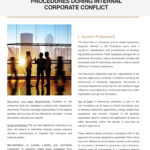To read or download the article, please click the following link
Introduction to the Patent Cooperation Treaty (PCT)
The Patent Cooperation Treaty (PCT) is an international agreement that simplifies the process of seeking patent protection for an invention in multiple countries. By filing a single “international” patent application under the PCT, an inventor can simultaneously seek protection in over 150 member countries, including Vietnam. The PCT streamlines the initial steps of patent filing, providing a unified procedure and delaying the need for multiple national filings, which can be both costly and complex.
Benefits of Using the PCT for Patent Protection
- Streamlined Application Process: Instead of filing separate applications in each country, the PCT allows for a single application that covers all member states, reducing administrative burden.
- Extended Timeframe: Applicants have up to 30 months from the priority date to decide on the specific countries where they want to pursue patent protection. This extra time is beneficial for assessing the commercial potential of the invention in different markets and arranging finances for the national phase entries.
- International Search and Preliminary Examination: The PCT provides a detailed international search report and a preliminary opinion on the patentability of the invention. These documents help applicants gauge the likelihood of obtaining patents in different countries and make necessary amendments to the application before entering national phases.
Step-by-Step Guide to Filing Through the PCT
- Filing the International Application:
- Eligibility: The application can be filed by anyone who is a national or resident of a PCT Contracting State. In Vietnam, this can be done through the National Office of Intellectual Property (NOIP) or directly with the International Bureau of WIPO in Geneva.
- Language: The application can be filed in any language accepted by the receiving office. If filed in a language not accepted by the International Searching Authority (ISA), a translation must be provided for the search purposes.
- International Search:
- Conducted by an ISA: The international search is conducted by one of the appointed ISAs, such as the European Patent Office or the US Patent and Trademark Office, which examines prior art and prepares a search report.
- Search Report and Written Opinion: The search report lists relevant prior art and provides an initial assessment of the patentability of the invention. The written opinion helps the applicant understand potential issues with the application.
- Publication of the International Application:
- 18 Months from Priority Date: The application is published by the International Bureau, along with the international search report. This publication makes the details of the invention available to the public.
- Optional Supplementary International Search:
- Additional Search by Another ISA: To ensure thoroughness, the applicant may request a supplementary search by another ISA, which can be beneficial for inventions in diverse technical fields.
- International Preliminary Examination (Optional):
- Request for Examination: The applicant can request an international preliminary examination to further evaluate the patentability of the invention based on the amended claims. This examination provides a second written opinion, which is non-binding but offers deeper insights into the potential patent grant.
- Entering the National Phase:
- Deadline: Before the end of the 30-month period from the priority date, the applicant must enter the national phase in each country where protection is sought.
- National Requirements: This involves submitting translations of the application, paying national fees, and possibly appointing local patent agents. Each country’s patent office will then conduct its examination according to national laws and regulations.
Specific Considerations for Vietnam
In Vietnam, the NOIP handles the reception and processing of PCT applications entering the national phase. The Vietnamese patent system requires:
- Translation into Vietnamese: The application must be translated into Vietnamese if it was initially filed in another language.
- Payment of National Fees: Fees must be paid to proceed with the examination process.
- Appointment of Local Agents: It’s advisable to appoint a local patent agent to navigate the legal and procedural specifics of the Vietnamese patent system.
By leveraging the PCT, inventors can efficiently manage the complex process of securing patent protection in multiple jurisdictions, including Vietnam, ensuring that their innovations are safeguarded on a global scale. This strategic approach not only saves time and resources but also enhances the chances of obtaining robust patent rights internationally.







